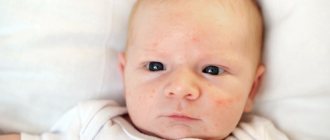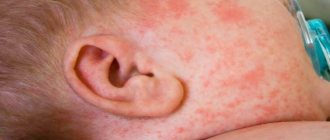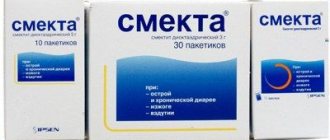November 13, 2018
Averyanova Sveta
Children need pets to teach them responsibility, develop a love for the animal world, and for communication and play. Cats are considered the most unpretentious pets that do not require special care. The only disadvantage of tailed fidgets is the ability to cause allergies. We’ll talk about how children are allergic to cats and what to do if the pet stays with you in our article.
What exactly causes cat allergies?
The cause of an allergic reaction to a cat is not just fur, as many believe, but the pet’s waste products. This is urine, dandruff (dead epithelium), saliva. They contain two types of protein:
- Fel d 1. Concentrated on the fur, remains on the paws after going to the toilet, produced by the exocrine glands. It is considered the most dangerous for humans among all other allergens in nature. But preventing its spread is easier. It is enough to clean the house thoroughly.
- Fel d 2. Contained in saliva on the skin of a cat. After contact with scratches, the child’s oral cavity actively spreads throughout the body. The baby begins to itch, cough, and runny nose.
Thus, allergens spread through the air and remain where the cat is lying, in the tray and on the owner’s hands. Once inside the body, they provoke a negative reaction of the immune system.
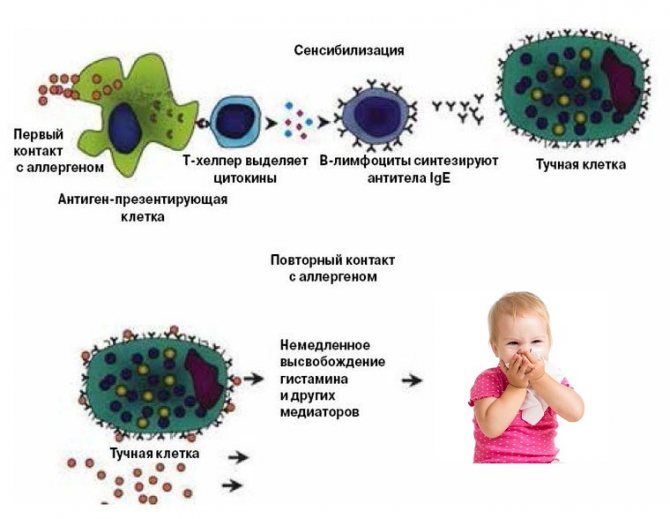
Indirect factors provoking allergies in a child if there is a cat in the house can be:
- tray filler;
- hygiene products for cats;
- animal feed;
- mold spores brought on paws and fur from the street;
- parasites on the skin and in animal excrement.
You also need to recognize them at an appointment with an allergist and undergo tests. Before contacting a doctor, try changing the litter or food. Perhaps the allergy will go away.
If the pet has been living in the family for a long time, the parents did not notice a negative reaction to the cat, but suddenly the baby began to sneeze, cough and choke, then we can talk about a combination of reasons. It is advisable to identify them separately, get tested for each and treat them comprehensively.
In addition to the large number of allergens indoors, there are spring flowering plants, stress, immune and hormonal imbalances in adolescents, and other factors in a child’s life.
Can you be allergic to animal fur?
Foods, chemicals, and cosmetics can cause allergies. Pet fur is often an allergen. More than 450 types of substances that provoke pathology are already known. However, it is the reaction to animals that is most difficult to perceive, because in order to avoid an unpleasant state, you often have to part with your pet.
A blow to the immune system can be provoked by any animal - rabbits, hamsters, dogs, cats. Even aquarium fish are not safe - reactions to their food and aquarium water components are known. Particularly sad is the reaction to the main pets - cats and dogs. Many find themselves faced with a difficult choice - to endure a painful condition or say goodbye to a friend.
It is not the fur itself that causes an allergic reaction, but the secretion of the skin glands, a specific protein that is also found in the saliva, dander, and urine of animals. When dry, the particles are easily transported through the air; they are difficult to destroy - they settle on clothes, furniture, and walls. Pet owners know that sneezing continues even when the pet has long left the apartment.
Cats cause the strongest reactions. Moreover, not only cat fur is dangerous, but also saliva, feces, and skin mites that live on animals. A reaction in the form of swelling also occurs at the site of an animal bite. There are known cases of sensitization caused by cat food. The pathological influence of cats on children is especially strong. Even an infant can be allergic to cats.
Dogs are second to cats, but dog hair is also a strong allergen. The tendency of dogs to lick their beloved owners, shake their heads and constantly follow behind makes it difficult to hide from their skin secretions.
How it manifests itself

Children react to the presence of a cat nearby and communicate with it individually. Frequent symptoms of intolerance to a purring animal are:
- Rhinitis. The nose is blocked or a clear fluid appears.
- Sneezing. The baby sneezes often, in series, and his nose itches.
- Tearfulness, redness of the eyes. The eyelids and eyeballs turn red. The baby rubs his eyes and lower eyelids. Older children report tingling on the mucous membranes, fatigue, and feelings of swelling.
- Dry cough, sore throat. The baby has difficulty breathing and sucking a bottle. Teenagers complain of a burning sensation in the throat, thirst, and hoarseness.
- Skin itching. Scratches and hands itch if a child touched an animal or played with a kitten. Redness may appear on the face and body if the baby touches them with fingers containing allergen particles.
- Drowsiness, weakness, apathy. They appear a couple of hours after contact with the animal.
- Conjunctivitis. Eyes swell and fester with frequent contact with cats.
- Temperature. Hyperthermia within 37–37.5°C. Rarely seen.
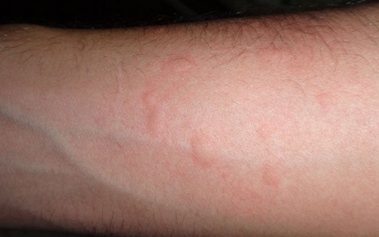
Signs of a cat allergy in children are similar to the symptoms of a common cold. Therefore, it is not immediately possible to determine what the reason is. Negative reactions appear in a complex or singly; they cannot be treated symptomatically, as with acute respiratory viral infections. At this moment, parents most often sound the alarm and seek help from an allergist or immunologist.
Important! Symptoms of an allergic reaction to a cat appear within a couple of hours or the next day. In rare cases, a cat needs to live in the house for a couple of weeks before the baby becomes ill.
Hypoallergenic animals
Since wool allergies became known, people have been trying to find breeds of pets that are safe for owners. However, it is known that proteins are produced by the skin of animals, so it is impossible to completely eliminate negative effects.
Long-term studies have shown that breeds that significantly reduce the risk of developing pathology exist. They were determined to be hypoallergenic.
In cats, these are breeds without hair - “hairless”; in dogs, representatives with long hair are less dangerous.
Short-haired dogs are more likely to cause problems; a specific protein easily rises directly from the semi-covered skin.
Chinese Crested Dog
Hypoallergenic cat breeds include Siberian, Sphynx, and Oriental. In dogs, the whippet, Chinese crested, and some types of terriers are considered the safest.
The effect of skin secretions and hair on the body can be reduced by proper care of the animal and adherence to strict hygiene measures.
If a person lives outside the city, it is worth getting a breed that can be kept outside, for example, a husky. When contacting an animal in the yard, the negative effect of the fur will not be too strong.
If your pet lives at home, you need to reduce the number of things that can accumulate particles - carpets, draperies, curtains. Furniture should be covered with leather, which absorbs secretions to a lesser extent and is better washed.
You need to regularly clean and ventilate the room, let your pets go outside more often, and carefully comb out excess hair.
Special care is also required for your pet. It must be washed regularly with special hypoallergenic shampoos. Pets should not be allowed to sleep in bed with their owners or sit on sofas. For mild allergies, these methods and the right choice of breed will help you live with your favorite animal.
A distorted reaction of the immune system to a foreign antigen is called an allergy. The body's response can be caused by various substances. One of the most common allergens is animal fur. An allergic reaction can occur when interacting with a pet or coming into contact with woolen items. The symptoms of allergies, as well as the intensity of pathological manifestations, can be different: it all depends on the characteristics of the body. Such an allergy requires timely and effective treatment, which will help avoid complications.
Pathological reactions of the body to wool are quite common. They appear upon direct contact with the allergen - wool. It is noteworthy that wool itself is not allergenic; the danger for allergy sufferers is the epidermis, dander, animal skin secretions and specific proteins that enter the body upon contact with wool or spread when animals shed in the air. Allergies can also be caused by invisible mites that live in the fur of pets. Allergies are provoked not only by direct contact with a pet (cat, dog, hamster), but also by contact with woolen products (things made of camel or sheep wool).
Manifestations of allergies to wool are more common in children than in adults. Children under five years of age are considered at risk, but allergies may first appear later. There are some factors that can contribute to the occurrence of this type of allergy:
- weakening of the immune system as a result of illness;
- the presence of pathological reactions to other substances;
- hereditary predisposition to the disease.
Symptoms of a wool allergy in children are usually pronounced. Signs in a child can be observed almost immediately after contact with the allergen. Symptoms can appear complexly or selectively. The main features include:
- swelling of the nasopharynx, face or eyelids;
- sneezing, runny nose;
- sore throat, hoarseness, intense dry cough;
- conjunctivitis, increased lacrimation;
- labored breathing;
- hyperemia of the skin, various rashes, itching.
The symptomatic picture differs somewhat depending on the age of the child. In children under five years of age, skin lesions usually predominate among the signs and may be accompanied by respiratory symptoms. In older children, an allergy to wool usually manifests itself as sneezing, coughing, and runny nose.
Diagnosis of allergy to wool
The primary diagnosis of allergies consists of examining the patient, studying the medical history, and excluding diseases with similar symptoms. In case of pathological reactions of the immune system, it is important to determine which component the body reacts sharply to. The following methods help to identify that allergic manifestations are caused by wool:
- immunoglobin tests;
- skin tests;
- monitoring the dynamics of the disease after excluding the suspected allergen.
What to do first
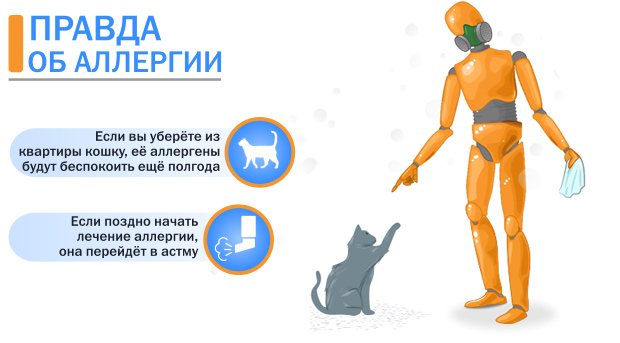
Of course, you can’t keep a cat at home if your baby is allergic to it. The constant presence of an irritant in the body provokes disease. An infant can develop into Quincke's edema or asthma.
Therefore, the first thing to do when persistent signs of allergy are detected and the diagnosis is confirmed clinically is to remove the animal from the apartment. This will help avoid consequences, but the child will not be able to get used to cat protein.
If there is nowhere to take the cat, and the symptoms are floating and mild, then you can leave her, but be sure to follow the following preventive recommendations:
- Minimize contact between baby and animal. Do not touch the cat, play with it, or feed it.
- Place your pet's bowl and tray in areas of the house where the child is less likely to be.
- Do general cleaning more often.
Especially in the room where the child plays and sleeps. Wash curtains and bedspreads. It is better to remove dust and wash the floor daily. - Swap carpets for linoleum or washable flooring. The thick pile of rugs and carpets traps allergen particles. As a result, the child breathes them constantly.
- Ventilate the apartment at least two to three times a day.
- Place a humidifier in the nursery. Don't let the cat into the children's room.
- Change your pet's cat litter, food, and shampoo to hypoallergenic ones.
- Brush the cat's fur and wash the cat's paws more often.
- Find out the exact cause of the baby’s negative reaction using observations and allergy tests.
This is interesting! There are cases when the allergy provocateur also becomes the cure for the disease.
Some people have escaped cat intolerance as they get older because of their intense love for them. They continued to take them in their arms and keep them at home, despite the doctors’ prohibitions. After a few years, the allergy disappeared or became almost invisible to the person.
Here's what Dr. Komarovsky thinks about treating cat allergies:
Treatment of allergies in children of different ages
To treat an allergy to animal fur, you must consult a pediatric allergist. If left unattended, the consequences can be serious - bronchial asthma or even Quincke's edema develops.
If the manifestations are not so pronounced, then stopping contact with the irritant will help. When symptoms are alarming, the doctor will prescribe medications for therapy:
- nasal vasoconstrictor drops to relieve swelling of the nasal mucosa (Nazivin);
- antihistamines for complex action (Fenistil, Zirtek, Suprastin, Loratadine);
- means for relieving puffiness (Allgra-D);
- eye drops to eliminate redness and tearing (Flixonase, Cromohexal);
- anti-asthma drugs (Beredual inhaler).
The most important condition for effective therapy is the exclusion of the allergen from the area of interaction. If you don't get rid of your pet, no medicine can help.
Treatment methods
It is impossible to cure allergies of any kind. A negative reaction is a manifestation of immune failure. This is how the body signals the need to beware, to protect yourself from contact with animals, and to exclude certain foods from your diet. In children, pet allergies may improve with age. They simply outgrow it, getting used to cat protein.
Allergy symptoms are treated based on medical reports and examinations.
The therapy is prescribed by the doctor. The child is recommended to take:
- Antihistamines. These are drops “Fenistil”, “Zodak”, “Zyrtec”. Tablets "Diazolin", "Suprastin", "Tavegil".
- Sorbents. To remove allergens from the intestines, stomach, blood. This is activated carbon, "Polysorb".
- Nasal drops. Relieve swelling, dry the mucous membrane in case of profuse flow from the nose. These are “Vibrocil” and “Aquamaris” drops for rinsing the nostrils.
- Cream for treating rashes. Corticosteroids are used in extreme cases, when hives and itching interfere with the baby's ability to sleep, eat calmly, or play. Use ointments "Comfoderm", "Fenistil".
- Immunotherapy. It involves a course of injections to get used to the cat’s protein. The child is given a special drug with a low concentration of the allergen. The child's body gets used to it gradually. Treatment can take from two to three months to a year. Therapy must be carried out under the supervision of a specialist. This method is the most effective way to cure allergies to cats. It can be addictive in children as young as 5 years old. The method of innovative treatment using injections is supported by Dr. Komarovsky.
At the same time as taking medications, prevent the spread of cat protein at home. Do daily cleaning, humidify the air, change the carpet in the nursery to laminate or thin carpet.
Prevention and reduction of allergies
Pediatricians recommend completely eliminating contact with animals if a child is allergic to wool. However, not all families are willing to part with their beloved pet: a cat can still be placed with friends or acquaintances, but it is more difficult to give a dog into good hands. It has been observed that children who have had the opportunity to be in the same house with animals since they were infants develop allergies less frequently. They are less susceptible to respiratory diseases, which is explained by the high content of endotoxins, which stimulate the immune system. However, this applies to those children whose parents keep a dog. If a baby has a reaction to fur, you should change the dog's diet and use a special shampoo to wash the animal. A healthy dog with a good metabolism will secrete a minimal amount of allergen, so you can leave the pet in the house. You will have to ventilate the rooms more often and regularly carry out wet cleaning, after removing the carpets until better times. With cats, everything is more complicated, since they spread aggressive and strong allergens that are dangerous for infants. The mobility and activity of flexible animals allows them to spread wool throughout the house. Prevention measures are ineffective; after removing the cat and general cleaning, the level of allergenic particles will decrease to an acceptable value after 4 months. Special products for washing cats will reduce the amount of irritants on the fur of a purring pet, but this method is appropriate if the occurrence of allergic reactions in infants is low. An effective method is to castrate a cat at the age of 8 months so that its body produces a minimum of allergens. If it is impossible to completely isolate the cat from the child, measures should be taken to prevent fur from getting into the respiratory tract:
- remove heavy drapes and roll up carpets
- provide ventilated fresh air flow
- place the pet's bowl and tray away from the room with the baby
If the advice does not bring results, and the allergy progresses, the cat will have to be given away. Along with it, you need to remove the items to care for it, after which you need to thoroughly clean the house, clean the carpets, furniture and wash the curtains. If you are just planning to get a pet, it is better to abandon the idea until the baby grows up. Children can be introduced to their little brothers at a conscious age; infants are at high risk of being frightened if a cat suddenly jumps into their crib. Happy pet owners will have to follow a number of rules:
- Mandatory castration of a pet
- Using toilet hygiene products
- Daily wet cleaning
- Prohibition on co-sleeping between a baby and an animal
- Brushing your cat or dog's fur every week outside the home
- Monthly pet shower, dog needs to be washed more often
Compliance with the listed requirements will reduce the risk of allergic reactions and will allow you not to deprive children of pleasant communication with their four-legged devoted friend.
Every type of animal—including dogs, hamsters, guinea pigs, and especially cats—can cause an immune reaction in infants, also called an allergy.
This reaction occurs when pet dander (skin flakes), saliva or fur comes into contact with a child’s skin. Sometimes cats themselves do not cause an immune reaction, but may carry other allergens on their fur, such as pollen or dust.
Traditional methods and homeopathy

Herbal infusions and homeopathic preparations are not suitable for curing cat allergies, but they make a child’s life much easier by relieving the symptoms of the disease. Use the following available recipes.
To relieve sore throat and cough
- Motherwort. The dry grass is crushed, poured with boiling water in a ratio of 2:10, and infused. After filtering, gargle. Laryngeal swelling and cough will go away.
- Chamomile. Flowers are infused in boiling water, 1 tablespoon per 200 milliliters. Drink as tea or gargle 4-5 times a day.
Against lacrimation, swelling of the eyelids, conjunctivitis
- Chamomile flowers. Cotton pads are soaked in the infusion and the eyes are wiped in the morning, evening, and throughout the day.
- Weak tea. The product is filtered. Dip a cotton pad into a container of tea and squeeze out excess liquid. Rub the eyes or make a compress for 1–2 minutes.
For nasal congestion, rhinitis
- Aloe juice. Squeezed from washed leaves, diluted in half with boiled water. Instill 1 drop 3-4 times a day.
- Bay leaf and linseed oil. Pour 20 bay leaves with oil and leave for 7 days. Place the product in your nose after waking up, at night.
Against itching, skin rashes
- Infusion of bay leaf. Add to bath or use as lotion.
- Aloe juice. Cut the leaf in half and apply to the site of inflammation. Redness will go away after 2-3 procedures.
To immunize the body
- A mixture of herbs. Combine string, chamomile, licorice, valerian, and oregano in equal parts. Fill with water (300 milliliters), heat in a bathhouse. Strain. Give your child 1 teaspoon 3 times a day.
- Peppermint. A decoction of 2 tablespoons of herbs is filtered and given to children to drink.
Homeopathy
Tablets and powders are produced based on natural ingredients. It is convenient to use homeopathic remedies because there is no need to boil or infuse herbs. It is enough to take a tablet or dissolve the powder in water. The following drugs are suitable for children:
- "Allergozan". Available in granule form. It is used for symptomatic treatment, seasonal and permanent maintenance of normal well-being. Used as an emergency way to get rid of a reaction to a cat.
- "Sambucus". Effective for allergic rhinitis, bronchitis. The granules need to be absorbed.
- "Phytocin DN". Ointment for the treatment of runny nose. Lubricate your baby's nasal passages before and after interacting with the kitten.
- "Petroleum". Suitable for children with reduced immunity. Effective for the treatment of itching and urticaria.
Important! Keep in mind that alternative natural medicine is not suitable for all children. If the baby cannot tolerate herbs, sneezes during spring flowering, or breaks out in a rash after baths with added extracts, forget about traditional methods.
Reasons for appearance
The child's body is most often susceptible to allergic reactions to a pet. Symptoms of animal allergies especially often appear in children under the age of 5 years.
But, for the first time, this phenomenon can also be observed in older children.
Many people believe that allergies arise specifically from pet fur, but this is not so; it can be caused by substances contained in the saliva, skin, fur and waste products of pets.
Cats have the most dangerous and strong allergens, so babies develop allergies immediately after interacting with and playing with them.
For older children, cats are less dangerous and a certain amount of time must pass for signs of an allergy to appear.
The following factors contribute to its occurrence:
- Weakened immunity (for example, as a result of illness).
- Individual intolerance to certain substances.
- Genetic predisposition to various types of allergic reactions.
Hypoallergenic cat breeds
If your child is allergic to cats and really wants to have an animal, then you can try to get a pet. Choose Murka based on the following safe criteria:
- Get a cat, not a cat. In females the protein is less aggressive.
- Buy a newborn kitten. Their protein production is weak, the child will have time to adapt to the allergen.
- Prepare to have your animal spayed and neutered. After surgery, protein is produced in minimal quantities.
- Choose light-haired animals. In black and brown cats, the squirrels are much more aggressive.
It is worth mentioning separately about hypoallergenic cat breeds. There is none of them. Among all existing species, we can distinguish those that were bred by breeders with an emphasis on the fact of provoking a negative reaction in the hosts.
They have no or short hair, protein secretion is less active, and their character is docile. That is, it is important how the animal looks and behaves in everyday life.
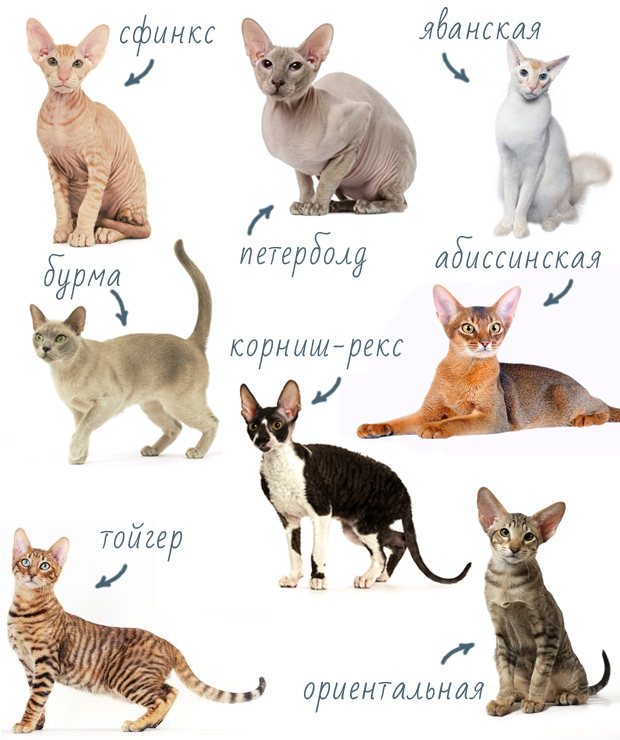
Pay attention to the following breeds:
- Canadian and Don Sphynx. The famous naked cat.
- Peterbald. There is a velor version, very short-haired and hairless. Either is considered safe for allergy sufferers.
- Lykoi. Often confused with sphinxes. Representatives of this breed have very short hair.
- Abyssinian, Bengal, Burmese, Savannah, Toyger. An incredibly beautiful breed with short hair, bred by crossing with wild relatives.
- Oriental. A cat with large ears, distinguished by its elasticity and dexterity.
- Angora. The breed was bred in Turkey. Color ranges from snow-white to black. Light shades are suitable for allergy sufferers. The cat hardly sheds.
- Cornish Rex, Devon Rex. They love to bathe, they can be washed every week, minimizing the spread of the allergen throughout the apartment.
- Javanese. A cross between the Siamese and Abyssinian breeds. They do a great job cleaning their fur coats themselves. Ready to lick fur around the clock.
For lovers of animals with long hair, we can recommend breeds with increased accuracy.
They actively produce protein, but quickly lick it off without having time to scatter throughout the house.
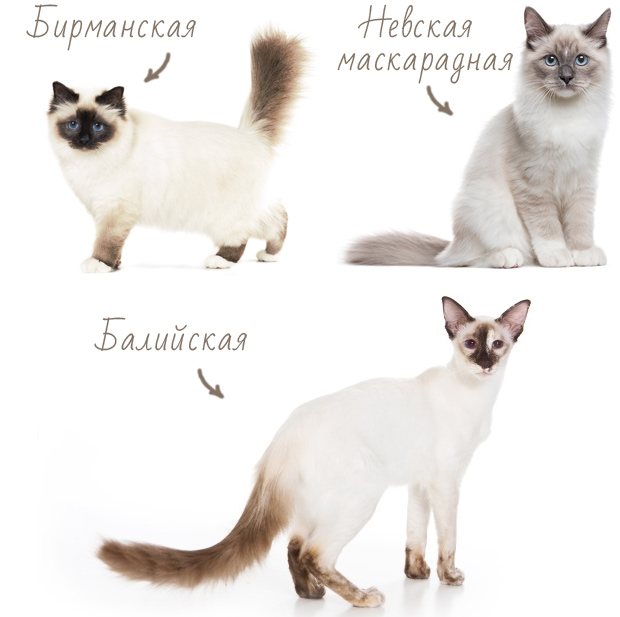
- Burmese, or temple. Brought from Indochina, where it lived in the dwellings of clergy. There is no undercoat.
- Neva Masquerade. Sheds heavily (twice a year), suitable for neat and lazy owners. If you brush and wash your paws regularly, you won’t suffer much from allergies.
- Balinese. The coat is similar to rabbit fur, there is no undercoat.
Very important! People with allergies should not have a Scottish or British Fold cat. They are considered the most allergenic. Dandruff and antigen settle in the thick undercoat. The Scotsman is not distinguished by increased accuracy or desire to lick himself.
How to treat a child
You should not try to treat your baby yourself, trying folk remedies and methods or giving advertised pharmaceutical drugs.
Consultation with a specialist if allergic reactions occur in a child is mandatory.
If parents have suspicions that this phenomenon arose in connection with contact with a pet, then it should be isolated for a while.
But this is not always possible and not always effective, since allergens are found throughout the house, on furniture, in the air, carpets, curtains and other household items.
How effective allergy treatment will be depends only on the parents, since they will be the ones who will treat the child with medications prescribed by the doctor, adjust his life and increase his immunity in accordance with the recommendations.
It is also worth discussing with an allergist which animal you can get for a child with allergies. Children with allergies are not afraid of fish, turtles and reptiles.
The danger comes from cats, hamsters, chinchillas, mini pigs, mice, rats, dogs and horses.
Medication therapy
Typically, allergies to pets in children go away after contact with the allergen is stopped.
But with severe manifestations of the disease, drug treatment is mandatory. Drugs prescribed by an allergist will help relieve its symptoms, usually these are:
- Antihistamines. Read more about them here.
- Drops or sprays into the nose if there is rhinitis or difficulty breathing.
- Eye drops in case of conjunctivitis, swelling and redness of the eyes and eyelids.
- Ointments for the skin in case of redness, swelling and itching of the skin.
The course and regimen of drugs is also prescribed by the doctor.
Letting the disease take its course in the hope that it will go away on its own is unacceptable, since a child’s body can behave completely unpredictably when encountering an allergen.
Allergy to animals is dangerous because it can be accompanied by anaphylaxis, angioedema, and bronchospasm.
All this, if the child is not given first aid, can lead to suffocation.
To avoid the above phenomena, it is necessary to diagnose the disease in time, carry out drug treatment and ensure its prevention.
Prevention
First of all, parents need to increase the child’s immunity in all possible ways, since a strong immune system will not react as much to various allergens.
That is, the child needs to be provided with proper fortified nutrition, a regimen and exercise.
If your baby experiences allergic reactions at an early age, it is better to limit his stay and communication with animals.
When it is not possible to isolate a pet, it is necessary to minimize the occurrence of allergies.
It is necessary to carefully monitor the pet’s cleanliness, carry out regular wet cleaning using special products, frequently ventilate the room, and prohibit the pet from sleeping or lying on the bed or baby’s clothes.
Be sure to get rid of dust accumulations in the house, namely carpets, bedspreads and rugs, as they contain large amounts of wool, dead skin particles and pet dander, which contain substances that cause allergic reactions.
Dear readers, subscribe to our resource updates and see you in the next article!
An allergy is the body's hypersensitivity to a specific component or factor. The most common types of allergies include a pathological immune reaction to animals. The allergen in this case is a special substance (protein) that is secreted by the glands of the animal. Allergies to animals can manifest themselves in different ways. Acute manifestations are especially dangerous, which is why it is important to promptly identify the allergen, carry out symptomatic therapy and take measures to avoid relapses.
The causes of an allergic reaction to animals lie in the fact that the body reacts sharply to a protein that is part of the skin, fur, saliva and feces of pets. Often manifestations of this type of allergy can be observed in infants. There are several factors that contribute to allergies:
- weak immune system of the newborn;
- genetic predisposition of the baby to allergic manifestations;
- individual sensitivity to an allergen (animal protein).
Allergies in infants usually occur if there is a pet in the house. Cats are considered the most “allergenic”: they leave fur all over the house, and it contains a “provocateur” of allergic reactions. However, sometimes allergic manifestations in a newborn can occur even if there is no animal in the house. For example, wool can be brought from the street, or the baby can inhale an allergen while walking. In this case, it is very difficult to determine the cause of allergic manifestations, since there is no obvious factor that provoked the pathoimmune reaction.
In infants, animal allergies appear immediately after contact with the allergen. Due to the immune system not fully formed, the newborn’s body usually reacts violently to those substances that it considers dangerous. The main symptoms of this type of allergy include:
- redness of the skin;
- swelling of the subcutaneous tissue;
- skin itching;
- nasal congestion or, conversely, excessive discharge from it;
- labored breathing;
- frequent sneezing and dry cough;
- conjunctivitis.
Symptoms can occur individually or in combination. The intensity and nature of the symptoms depends on how the contact with the allergen occurred: through the skin, mucous membranes of the respiratory tract, etc. Allergic manifestations in a newborn may be accompanied by general malaise, problems in the gastrointestinal tract, and fever.
Diagnosis of animal allergies
Diagnosing animal allergies in newborns is not difficult if there is a pet in the house. In other cases, it is difficult to determine the allergen, since infants are allergic to various factors. The diagnosis is made based on:
- examination of the newborn;
- studying anamnesis;
- general tests (help to exclude diseases with similar symptoms).
You can also diagnose an allergy to pets in a newborn by isolating the baby from the pet and observing the clinical picture over time. But for this, the mother and baby will need to temporarily move to a house where animals have not lived for a long time: if you find temporary housing for your pet, the symptoms may not subside, because allergens may remain on clothes and furniture.
Useful tips
If you haven’t decided to get rid of your tailed pet or have brought him in at your own peril and risk, then create a favorable atmosphere in the house for humans and animals.
Find a compromise in arranging your home, then the child will not suffer from chronic rhinitis and cough, and the cat will enjoy life with its owner to the fullest. Use the following helpful tips:
- Choose your cat breed carefully. Find out about the personality traits and degree of risk for an allergy sufferer in advance.
- Do not get an adult animal, but a baby.
- Teach your cat to sleep and lie in the same place during the day. Buy a special pet house, a basket, and lay down a rug. Do not allow them to lie on a child’s bed or rug where the child is playing.
- When leaving the house, close the doors to the rooms, leaving the room where the cat's place is located free.
After the animal, particles of fur, dandruff, and feces remain on surfaces. It may take a year to get used to the new rules, but smart cats understand the current situation quickly. - Install an air purifier in your apartment. Filters will have to be changed and cleaned every week. After their work, the air becomes absolutely clean of allergens. Patients of immunologists with a severe stage of manifestation of the disease should definitely acquire it.
- Wash your hands after touching the cat, if you touched the tray, litter, or bowl.
- Do not ask your child to care for an animal. Wash the tray, feed yourself.
- Prevent worms from your pet every 6 months. It is more difficult to defeat parasites in a walking cat than in a domestic cat. Therefore, you need to check your excrement for larvae regularly.
- If the cat is walking, worm it once every 3 months, apply anti-tick and flea medication to the withers, and wear a special flea collar. Insects and worms can be a source of illness.
- Before going to bed, rinse your child’s nose with Aquamaris.
- Wash baby clothes with hypoallergenic powder more often.
The tips listed above are not able to rid a child of allergies, but they will minimize the risk of symptoms appearing. In case of severe symptoms, deterioration of the condition and the development of chronic diseases against this background, the only way out is to give the kitten into good hands.
